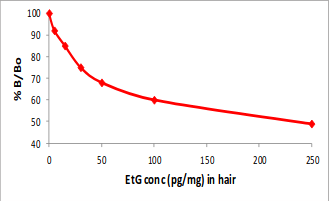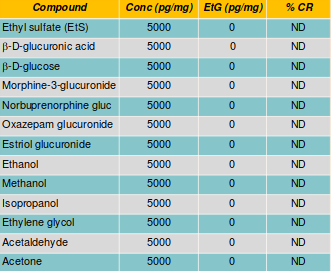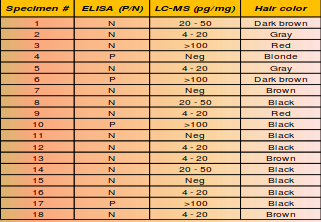Abstract
Alcohol addiction is a problem affecting millions of people worldwide. Monitoring sobriety and/or abstinence levels in cases of driver license reinstatement is important. Typically, ethanol can be measured by means of various biomarkers in the body and by direct metabolites like ethyl glucuronide (EtG). Following alcohol consumption, most of the alcohol in the body is converted to acetaldehyde in the liver, via the enzyme alcohol dehydrogenase. However a small quantity is also converted to ethyl glucuronide by means of the glucuronidase enzymes.
Objective
- To develop an immunoassay screen for EtG in hair.
- The window of detection of EtG in urine and blood is 80 hrs and 18 hrs respectively, which is relatively short. In order to monitor sobriety over longer time periods, it becomes necessary to utilize hair, since EtG remains in the hair follicles for up to weeks, even months, and can be a marker of chronic heavy drinking.
- This study reports the first enzyme linked immunosorbent assay (ELISA) method to screen for EtG in hair and has been developed to comply with Society of Hair Testing cutoff of 30 pg/mg.
Assay method
- EtG specific IgG was immobilized on microtiter plates for the assay.
- Calibration curves were prepared at 5, 15, 30, 50, 100, 250 and 500 pg/mg, using negative hair.
- Hair extraction buffer (1 mL; proprietary formulation) was added to hair (20 mg); sonicated (60
C / 2 hrs). - Hair extracts (125 μL) were pipetted in duplicate into microtiter wells and incubated (30 min).
- Enzyme conjugate (75 μL) was added and incubated (60 min).
- Plate washed 6X with DI water, then TMB substrate (200 μL) was added and incubated (30 min).
- Reaction was stopped with 1N HCl (100 μL) and read at dual wavelengths of 450 and 650 nm.
Results and Discussion
The ELISA assay employs competitive binding between the enzyme conjugate and free analyte in the sample for a fixed amount of antibody binding sites, which is proportional to their concentration in the mixture.
The cutoff of the assay is established as 30 pg/mg.

Assay validation


Conclusion
A highly sensitive and specific ELISA method for detection of EtG in hair has been developed.
Results should always be interpreted with care, taking into account other factors.
This assay provides toxicologists with a useful screening tool, for determining abstinence from alcohol.
References
- Segmental determination of ethyl glucuronide in hair: A pilot study, Appenzeller B., Agirman R., Neuberg P., Yegles M., Wennig R. Forensic Sci. Int. 2007,173, 87- 92.
- Ethyl glucuronide concentrations in oral fluid, blood and urine after volunteers drank 0.5 and 1.0g/kg doses of ethanol, Hoiseth G., Yttredal B., Karinen R., Gjerde H., Morland J., Christophersen A. J. Anal. Toxicol. 2010, 34, 319-324.
To view the full study and its data, visit this link.
Looking for a unit for products and accessories for detection of Ethyl Glucuronide or products from Immunalysis? Check out this list below.